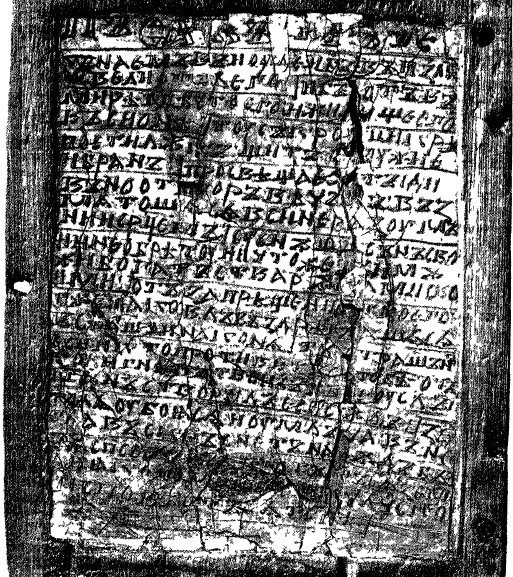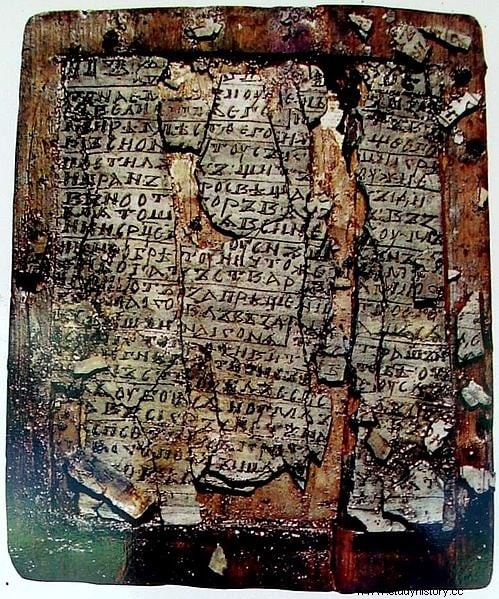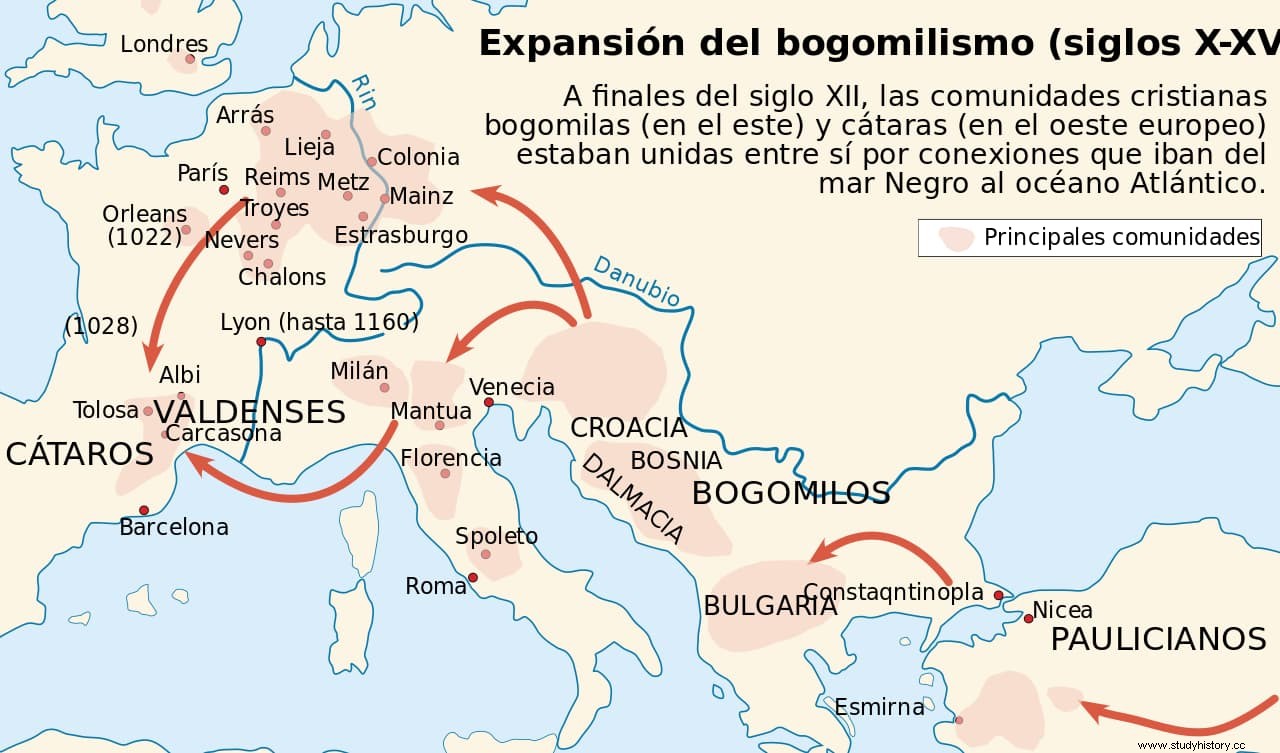Discovered in the year 2000, this codex continues to be studied by experts, who continue to discover layers and layers of hidden texts, accumulated over decades.
The Novgorod Codex it is a palimpsest, a type of manuscript that has several layers of text, the result of being reused over and over again. This practice began around the seventh century, due to the scarcity of Egyptian papyrus and the high cost of parchment, and would continue for five centuries. The usual thing was to scrape the ink with a type of pumice stone and write over it again. But there were always remains of the previous writing.
The uniqueness of Novgorod is that so many layers of writing have been found that it is considered a hyper-palimpsest . Not only that, it is the oldest manuscript of the Rus , the people that modern Russians, Belarusians and Ukrainians have as their direct ancestors.

In fact, their origin is still the subject of controversy today, although the most widespread theory is that they were Varangians or Vikings from Sweden, who emigrated to northeastern Europe, later moving south to found the medieval state of kyiv.
The codex is made up of three wooden tablets, 19x15x1 centimeters, containing four pages of wax on which the author, or authors, inscribed hundreds of texts over three decades, each time erasing the preceding text and writing again. over. The boards were joined with wooden pegs inserted into the holes on their edge, to form a kind of book.
Carbon dating has established the date of its creation at the end of the 10th century, and in fact the year 999 recurs frequently in the text itself.
They were discovered on July 13, 2000 in the excavations of the ancient Russian city of Novgorod (today Velikiy Novgorod), whose archaeological mission began in 1932. They were found in a stratum about 50 centimeters deep, whose dating is estimated between 1015 and 1020 . Since the texts it contains are Christian and this religion reached Kievan Rus' in 988, researchers assign it an unequivocal date between that year and 1030.
As for the texts it contains, those that can be read with the naked eye, are psalms written in Old Church Slavonic, a language developed by Byzantine missionaries in the 9th century from the Slavonic dialect of Thessaloniki, and which is the first Slavonic language. of a literary nature.
Beneath them the Russian linguist Andrei Zaliznyak found numerous layers with traces of thousands of earlier texts, often superimposed in such a way as to form a complicated labyrinth of difficult-to-decipher strokes and lines. A single line of text can take weeks or even months to read correctly.
What's more, similar texts have been found that are repeated over and over again, without it being known to date if the copies were made at the same time, or weeks, months or years later.

Among the occult texts that have already been deciphered are parts of the Apocalypse of St. John, numerous psalms, a translation of John Chrysostom's Treatise on Virginity, and various alphabets. But also numerous hitherto unknown texts, such as the Story of the Apostle Paul on Moses , the Spiritual instruction of the father and mother to the child or the Instruction of Alexander of Laodicea on the forgiveness of sins .
From the analysis of these texts it is deduced that their author would belong to a group excluded from the official church, therefore heretical. The theory is based on two of the reconstructed sentences:
Where reference is made to a certain Alexander, the Areopagite of Thrace, of Laodicean origin , to which powers normally reserved only for God are attributed. Below are various prophecies from Alexander himself, and exhortations to the faithful to leave their villages and homes and a host of other worldly things.
The other sentence says:
From where scholars deduce that this monk Isaakiy may be the author of the palimpsest, who would follow the schismatic teachings (hitherto unknown) of an Armenian prophet named Alexander, who lived in Thrace and from where he spread his doctrine, as an early form of Bogomilism .
The Bogomils were an ascetic community that denied the divinity of Jesus and the crucifixion, and mixed Docetist and Gnostic beliefs in 10th-century Thrace. For example, they held that God had two sons, Satan and Michael, identified as good and evil. wrong. Its influence would give rise to Catharism in Occitania and the northeast of the Iberian Peninsula.
A clue to the origin of the codex is that the Nikonian chronicle cites a certain schismatic monk named Andreyan , who was imprisoned in the year 1004, precisely at the same time that the texts were written. Furthermore, the codex was found near the remains of an 11th-century building known to have served as a court of law, which gives rise to interesting hypotheses.

The texts also contain numerous allusions to the city of Laodicea, an ancient foundation of the Seleucid empire established around 250 BC. by Antiochus II, and located a few kilometers north of the current Turkish city of Denizli in Anatolia. However, no fact or event that occurred there is mentioned, which is why Zaliznyak believes that the word laodicea It could have been a kind of secret key among the Bogomils.
Entering the field of speculation, a schismatic work is known, written about 500 years later by the heretic Fedor Kuritzyn, whose title is The message of Laodicea , but evidently Kuritzyn could not have known about the Novogorod codex or its hidden content.
